Have Hummingbirds Visit Your Home!
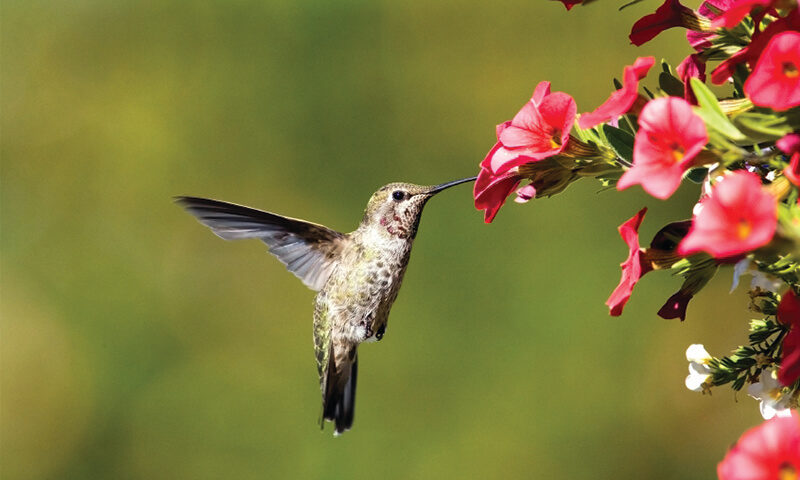
Due to the recent climb in interest regarding environmental conservation, it is more important than ever that we know how we can help right from our own homes. For most of us, that can start with providing pollinators like hummingbirds, bees, and butterflies with an area in which they can thrive! Many gardening beginners may think that just planting a few flowers that pollinators enjoy is suffice. For Hummingbirds in particular, there is so much more than meets the eye!
With a better understanding on how Hummingbirds behave and what they do for the environment, your garden will be a haven for these tiny birds. However, pollinators as a whole warrant their own discussion, so let’s begin by touching on some main points.
The Role of Pollinators
First, pollinators like Hummingbirds do so much for the well-being of our planet. Take a look at some key facts about their roles in our ecosystems:
- Pollinators act as facilitators for plant reproduction, aiding roughly 95% of the world’s flowering plants in the pollinating process.
- Butterflies, Bees, Hummingbirds, and even Beetles, Dragonflies, Bats, Moths and Small Mammals make up this group that help pollen travel between plants.
- Pollen grains attach to these creatures as they drink nectar or feed on pollen from a plant. These grains then get transferred to each new plant that they visit. The grains carry essential nutrients that flowers, fruits, and veggies need to reproduce.
You may not realize it, but that fruit in your lunch or veggie side you had for dinner is probably thanks to a pollinator! These helpful workers also clean the air, stabilize soils, protect the planet from extreme weather conditions, and support other wildlife.
Hummingbirds themselves love to drink nectar using their long, thin beaks. Their size allows them to squeeze into tiny spaces to get every last drop of nectar! If you want to attract these pollinators to your garden, next dive into learning a little bit more about their behavior.
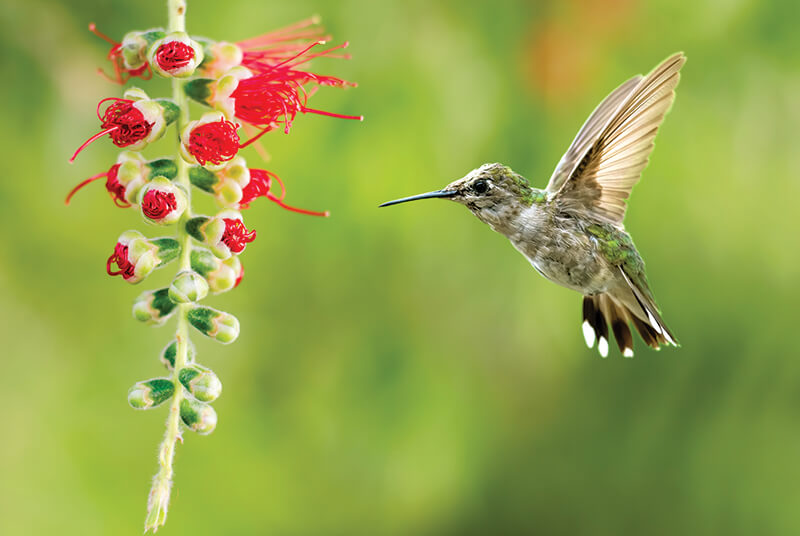
Hummingbird Behavior
The hummingbird exhibits very distinct behavioral patterns to observe and prepare for in order to attract them. While an excellent step in doing so includes planting pollinator-friendly plants, following the right feeding practices is key.
Feeders
First, every Hummingbird garden needs a feeder! These birds perch to rest often, so make sure your feeder has one for their comfort. Our stores carry several styles of feeders from Audubon to consider, including:
- Apple 40 ounce Poly Feeder with a bright red color to help lure them
- Glass 24 ounce Feeder – opacity allows them to better see their food
- Embossed 14 ounce Embossed Glass & Metal Feeders
- We also carry quality feeders from More Birds, Perky Pet, and Heritage Farms.
Hummingbirds do not fall into the category of cavity-nesters, therefore rule out choosing birdhouses and other enclosed fixtures. They will occasionally visit birdbaths, but keeping them well-fed with the proper feeder is the goal. To keep your birds coming back year after year, get your feeders out by April 1st. It may seem early, however they migrate from the South and pass through our area anywhere between April 1st and April 20th. If they pass through and there are no feeders that catch their eye, they surely move to the next food source.
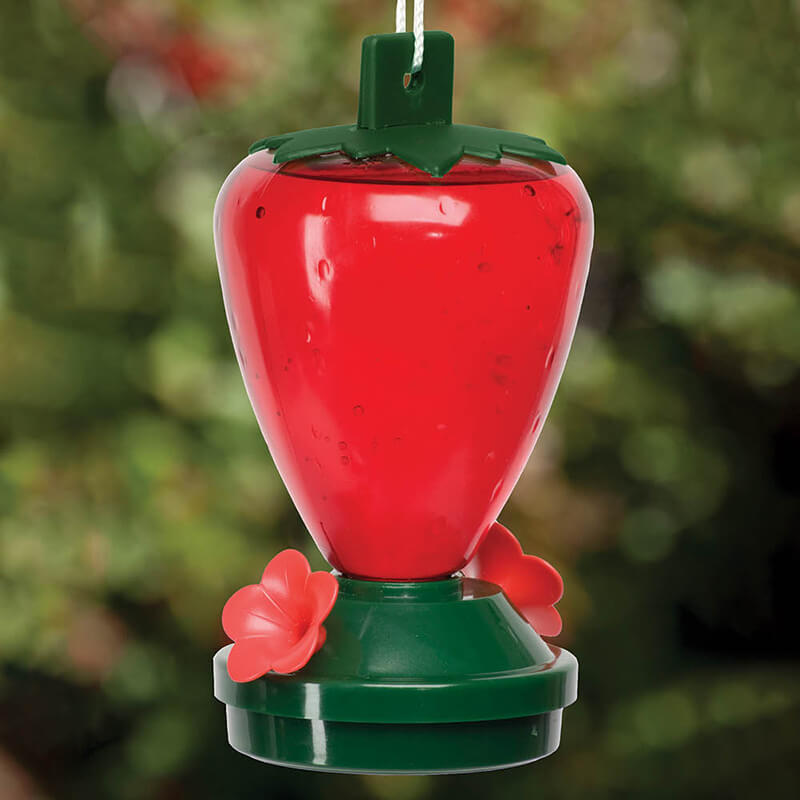
Position and Maintenance
Hummingbirds tend to assert their dominance over their territory and compete for feeders. Consider keeping two separate feeders placed yards apart from one another so that you can enjoy multiple birds visiting your planters without fear of competition!
Choose a partly shady spot to hang your feeders. Food in feeders placed in the sun will spoil much faster than those in the shade. Though cover from the sun is important, avoid hiding the feeder too far from view that the hummingbirds miss it. Try a spot under a medium-sized tree, tall shrub, or overhang from your house situated near your pollinator garden.
- Ensure that you have easy access to your feeder as well. Steer clear of hanging it too high or too far back into your landscape where you cannot reach it. Try not to place the feeder in a location where you might eventually plan to expand your garden and need to move it. Consistency is key, as hummingbirds grow familiar to their favorite spot to feed. They will revisit a feeder they previously patronized, so do your best to not to drastically manipulate their environment over time.
Remember those, “distinct behavioral patterns” we mentioned? Well, these birds can be quite picky. They prefer very clean feeders and will skip over ones that do not meet their standards. Make it a point to clean and refill your feeders roughly twice per week, or as needed. We offer a Stokes Hummingbird Feeder Cleaning Sponge that works with both plastic and glass feeders. If you keep them clean and well-stocked, expect an awesome Summer of bird-watching.
Feed
Speaking of keeping your feeders filled, always follow the correct guidelines when placing food out for your hummingbirds. As previously mentioned, hummingbirds enjoy drinking nectar from plants. To emulate this recipe, try dissolving sugar in water for a sweet solution that they will love. Our stores carry red dyed hummingbird food that attracts them down from their perches high up in the tree. While, some red dyes can be harmful, our dyed food contains red dye #40, approved by the FDA for human and animal consumption. We also carry a 64 ounce Ready to Use Hummingbird Nectar that appeals to many varieties.
Take note, the sugary nectar attracts ants and even bees and wasps. Try using an Ant Guard to keep them spoiling the food by drowning in it. Hummingbirds may also avoid the feeder if they notice ants and other insects invading, despite the fact that they eat hundreds of bugs per day. This goes back to their clean-freak personalities. Hummingbirds actually quite enjoy fruit flies and other small insects, as they provide them with essential protein and vitamins. They feed their young a combination of bugs and nectar roughly every 20-30 minutes.
Replace hummingbird feed often for both cleanliness and to satisfy their appetite! Though common practice is to include the color red around your feeder, the food itself does not always need to be red to attract them. You can use clear food and accent your garden or area around your feeder with brightly colored flowers, especially ones with deep red centers.
Planting the Right Flowers
Now that you know more about positioning and maintaining feeders, as well as choosing the right feed, its time to plant! Pollinator gardening is always one of the most rewarding ways to garden. There exist endless combinations of perennials, annuals, trees, and shrubs that you can implement to attract these helpful creatures. Brightly-colored flowers acts as powerful attractants. Hummingbirds also enjoy tubular or trumpet-shaped blossoms. Offer an abundance of these favorite nectar-bearing flowers:
Perennials
- Aster
- Bee Balm
- Coreopsis
- Daylily
- Digitalis [Foxglove]
- Echinacea [Purple Coneflower]
- Heliopsis
- Heuchera Sanguinea [Coral Bells]
- Hosta
- Larkspur
- Lobelia Cardinalis [Cardinal Flower]
- Peony
- Phlox
- Rudbeckia [Black Eyed Susan]
- Salvia [Sage]
- Scabiosa [Pincushion]
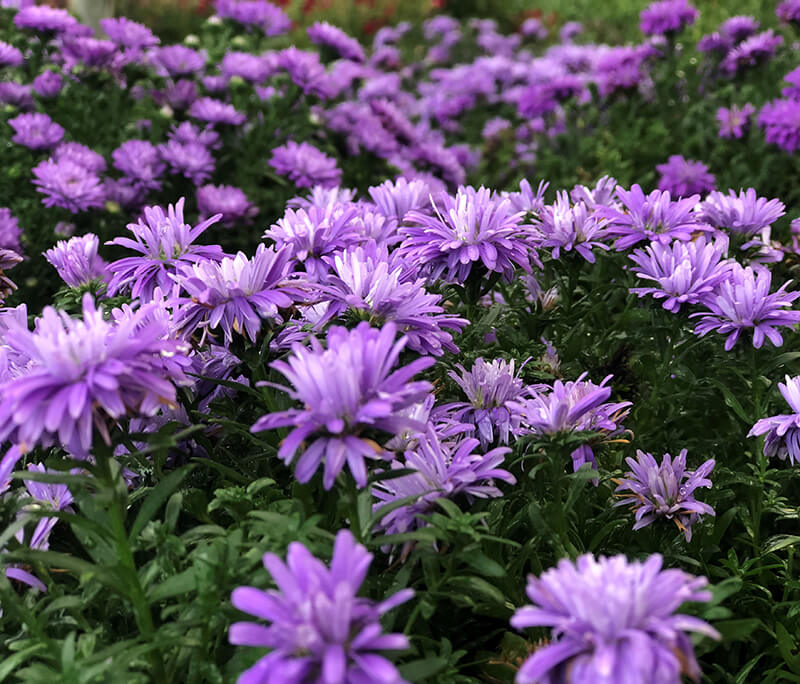
Annuals
- Begonias
- Canna
- Dianthus
- Flowering Vinca
- Fuchsia
- Impatiens
- Lantana
- Nasturtium
- Phlox
- Salvia
- Sweet Pea
- Torenia
- Verbena
- Zinnia
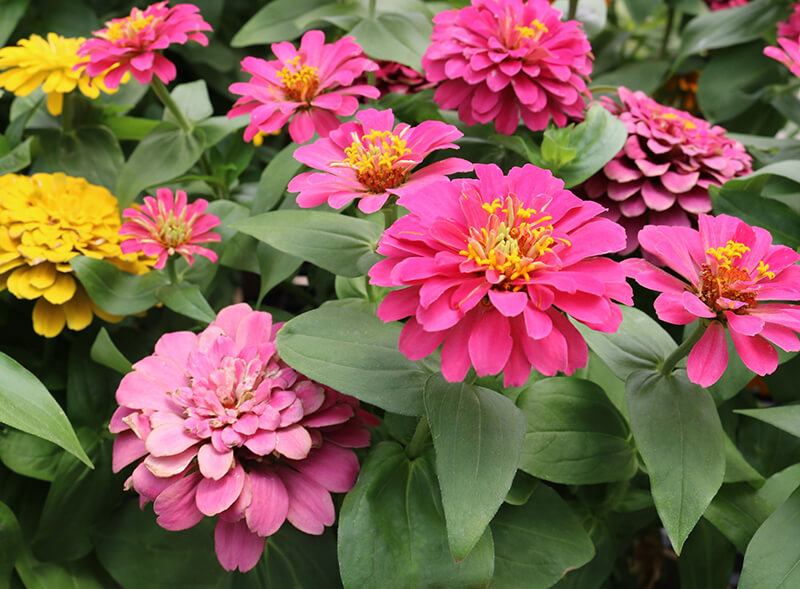
Vines, Trees, and Shrubs
- Azalea
- Butterfly Bush
- Cypress Vine
- Hibiscus
- Lilac
- Malus [Crabapple Tree]
- Morning Glory
- Prunus [Cherry Tree]
- Rhododendron
- Trumpet Vine
- Viburnum
- Weigela
- Yucca
Miscellaneous Tips and Facts:
- You might also see Woodpeckers, Tanagers, and Orioles visit your feeders for a quick snack!
- Consider getting a bird-specific feeder for any of these species if they become too invasive to your hummingbird feeder.
- Cats, squirrels, opossum, and raccoons might mess with your feeders if they are in reach.
- One solution to this is to bring your feeder in after dusk.
- Window feeders also help keep other mammals away.
- With patience and careful movements, once accustomed to your presence hummingbirds might feed from your hand, or from a feeder you are holding! Slow and steady wins the race.
- When Winter comes around, most hummingbirds will start to migrate south, even as far as outside the United States. Leave your feeders out until the first frost hits, or if you notice that next to no birds are visiting them. It does not hurt to leave the feeder up, as hummingbirds instinctively know when to migrate.
Start Your Hummingbird Garden Today!
Hummingbird watching is an excellent stress reliever and planting pollinator-friendly flowers adds wonderful value to your landscape. The more that we protect and provide hummingbirds with their necessary resources, the more good that they do for our planet. Visit any of our Home & Garden locations to speak with our team members for tips on hummingbird watching, and shop our Birding selection for feed, feeders, and more!
See What’s On Sale for Birding Now!
